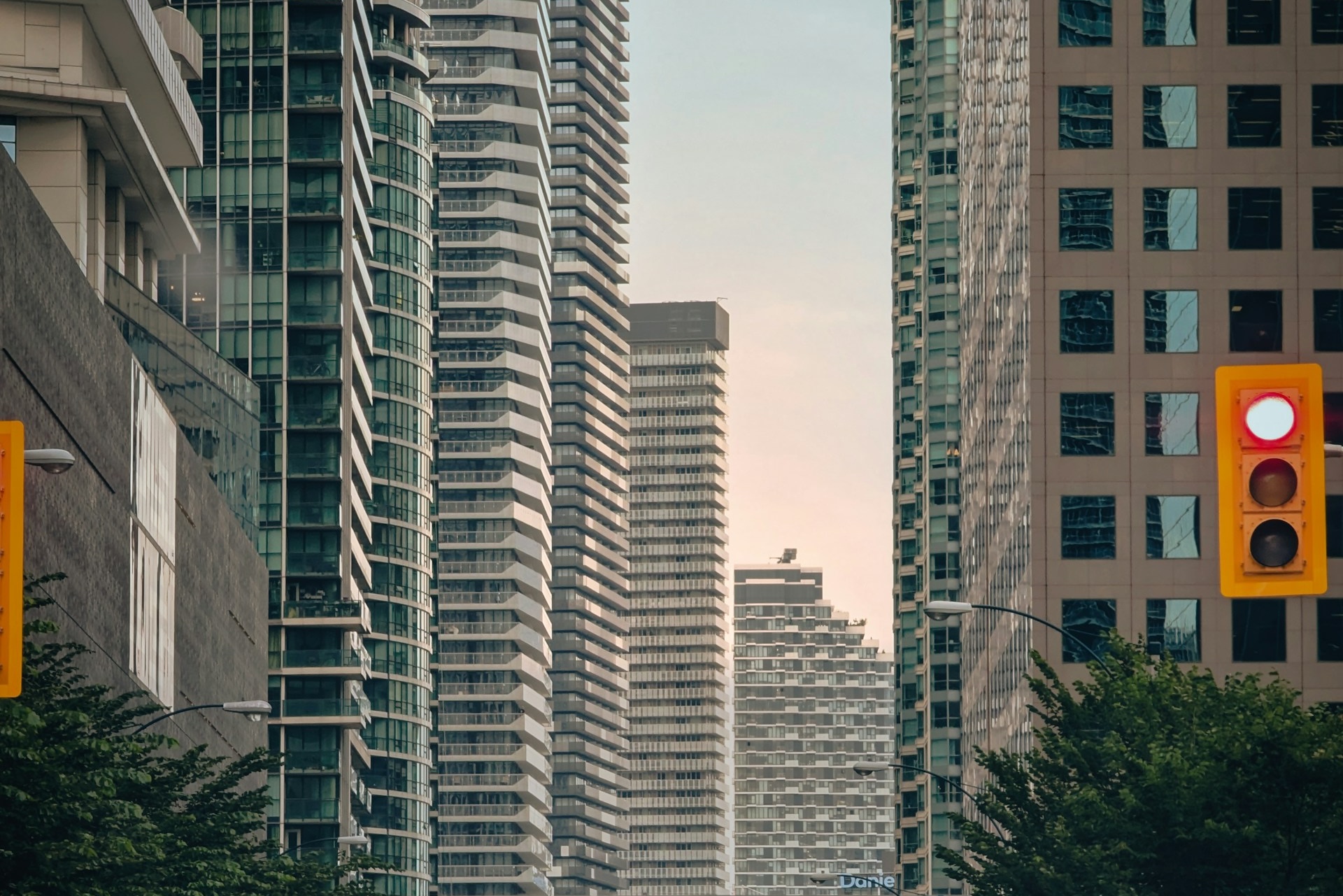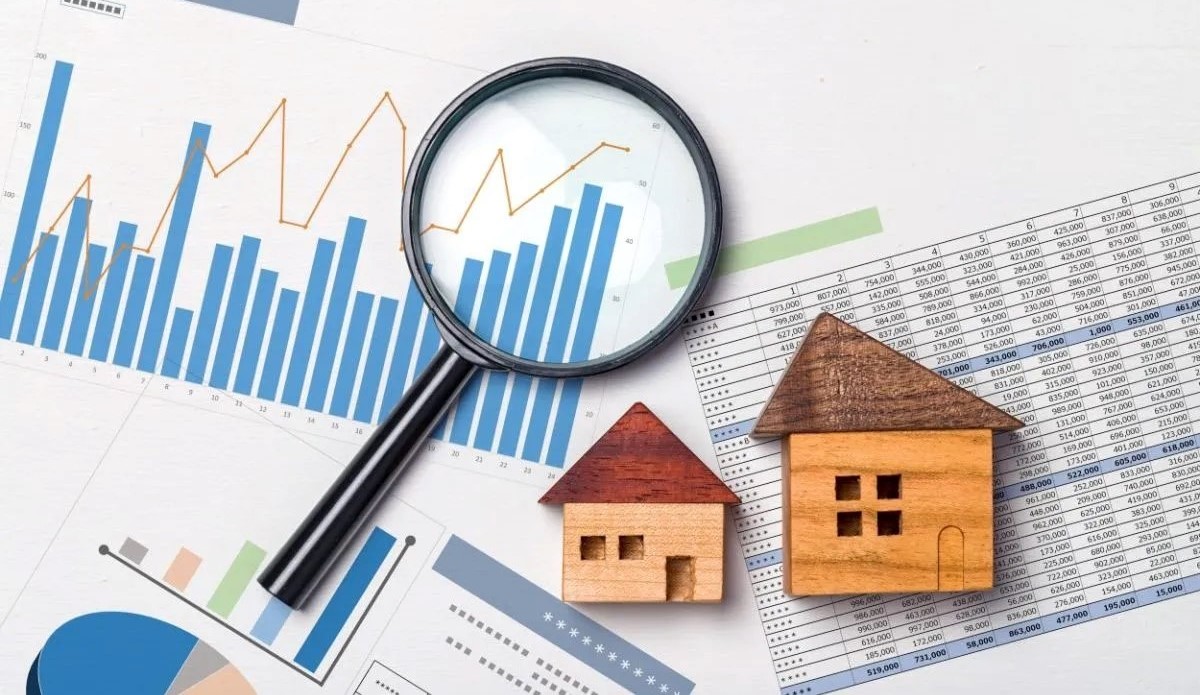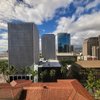Two Black men, in tuxedos, clasp hands and dance in a smoky foreground in a scene from "Looking for Langston," the 1989 film that reevaluated gay and lesbian contributions to the Harlem Renaissance.
A map of Manhattan with a boundary drawn around Harlem, just north of Central Park.
A map shows the borders of Harlem, which, south to north, extends from the top of Central Park to the area above 145th Street, and, west to east, from St. Nicholas Park to Fifth Avenue.
A black-and-white photograph of Ma Rainey’s Georgia Jazz Band. Ma Rainey, in a dress and headband, is surrounded by five Black male musicians playing, from left, trombone and trumpet.
JP Jazz Archives/Redferns
On Stage and Off
Many L.B.G.T. performers and entertainers of the Renaissance used their artistry to express their sexuality. Others went to great lengths to keep their private lives hidden. Only recently have scholars been able to unpack their complicated lives, providing a brighter, clearer vision of who they were.
A map highlighting various points in Harlem.
A map of Harlem with a location labeled “Ma Rainey at the Lincoln Theater” near 135th Street and Lenox Avenue.
Map with location labeled “Gladys Bentley at the Clam House” near 135th Street.
Map with location labeled “Bessie Smith at Hotel Olga” in the northernmost part of Harlem.
Map with a location labeled “Jimmie Daniels” on 116th Street, and a photograph of Jimmie Daniels Restaurant.
Map with a location labeled “Ethel Waters” near Colonial Park in northwest Harlem, and a photograph of 580 St. Nicholas Avenue, where she lived for a time.
Map with a location labeled “Edna Thomas” in south Harlem, and a photograph of 1890 Seventh Avenue, where she lived.
Map with a location labeled “Georgette Harvey” south of 116th Street.
Map with a location labeled “Alberta Hunter” north of 135th Street, and a photograph of 133 West 138th Street, where she lived.
Patrons of the Savoy Ballroom dancing the Lindy Hop and other dances.
Out and About
As the period flourished, so did the number of public and semi-public spaces for L.G.B.T. life — theaters, lodges, cabarets, salons, nightclubs, parks, bathhouses, streets — developed, said Shane Vogel, a professor of English and African American Studies at Yale University and the author of “The Scene of Harlem Cabaret: Race, Sexuality, Performance.”
Each location “created spaces for people in Harlem to experience new kinds of social contacts and erotic possibilities that weren’t as widely available in the decades before the Harlem Renaissance,” he said.
Patrons of the
Map with a location labeled “Hamilton Lodge at Rockland Palace” at the very top of Harlem, and a photograph of 280 West 155th Street, where the venue was located.
Map with a location labeled “Ubangi Club” at 131st Street and Seventh Avenue, and a photograph of the building where the venue was located.
Map with a location labeled “Swing Street” at West 133rd Street, running between Lenox and Seventh Avenue, and a photograph of The Nest, one of the nightlife venues on that block.
Map with a location labeled “The Cotton Club” at 142nd Street and Lenox Avenue, and a photograph of the exterior of the club, with a large marquee and cars in the foreground.
Map with a location labeled “Clam House” at West 133rd Street, near Seventh Avenue, and a photograph of the exterior of the club, with an awning, flanked by two cars.
Map with a location labeled “Savoy Ballroom” on Lenox Avenue, between 140th and 141st Streets, and a photograph of the exterior of the club, with a large marque that reads “SAVOY.” Pedestrians walk in the foreground.
Map with a location labeled “Mount Morris Bathhouse” at 28 East 125th Street, just outside the east parameter of Harlem, and a photograph of the building, with a man crossing the street in the foreground.
Map with a location labeled “Harlem Y.M.C.A.” at 180 West 135th Street, near Seventh Avenue, and an illustration of the building, which rises high above its neighbors.
Map with a location labeled “Hotel Olga” at Lenox Avenue and 145th Street, and a photo of the building.
Map with a location labeled “Lafayette Theater” at 2247 Seventh Avenue, and a photo of the exterior of the theater, with a marquee, arched windows and a sign or flag hanging above them.
Robert W Kelley/The LIFE Picture Collection, via Shutterstock
The Smart Set
While race was commonly explored among the artists, thinkers and writers of the Renaissance, some openly broached the subject of sexuality, which was viewed as scandalous. For others, any references may have been carefully coded and more difficult to detect.
Map with a location at the far bottom of the map labeled “Alain Locke,” “Washington D.C.” and an icon pointing down.
Map with a location labeled “Nella Larsen” at 236 West 135th Street, near Eighth Avenue.
Map with a location labeled “Langston Hughes” at 20 East 127th Street, north of Mount Morris Park, just outside the parameters of Harlem.
Map with a location labeled “Countee Cullen” at 104 West 136th Street, near Lenox Avenue.
Map with a location labeled “Richard Bruce Nugent” at 267 West 136th Street, near Eighth Avenue.
Map with a location at the far bottom of the map labeled “Carl Van Vechten,” “150 West 55th Street” and an icon pointing down.
Map with a location labeled “Harold Jackman” at 7 West 134th Street, just outside the east perimeter of Harlem.
Map with a location labeled “Maurice Hunter” at 254 West 135th Street, between Seventh and Eighth Avenues.
Map with a location labeled “Claude McKay” at 147 West 142nd Street, between Seventh and Lenox Avenues, and a photograph of the exterior of the building.
A photograph of the Alexander Gumby Book Studio, with a semi-circle of people sitting and chatting or reading.
Alexander Gumby collection, Rare Book & Manuscript Library, Columbia University
Behind Closed Doors
Private spaces in Harlem — mainly homes and apartments — opened doors to the kind of intimate socializing and sexual experimentation that could not exist at large nightclubs or segregated venues. Away from the public eye, these spaces held invite-only soirees or rent parties that were primarily spread through word of mouth.
Map with a location labeled “A’Leila Walker and the Dark Tower” at 108 West 136th Street, on the far east side of Harlem, and a photograph of the exterior of the building.
Map with a location labeled “Wallace Thurman” at 267 West 136th Street, near Eighth Avenue, and a photograph of the block, with a car coming toward the camera.
Map with a location labeled “Iolanthe Sydney” at 267 West 136th Street, near Eighth Avenue.
Map with a location labeled “Alexander Gumby Book Studio” at 2144 Fifth Avenue, on the far east side of Harlem.
Map with a location labeled “409 Edgecombe Avenue” at the far north section of Harlem, and a photograph of a cluster of three high-rise buildings.
Harlem in 1938.
Looking Back, Through a Fresh Lens
Efforts to reexamine Harlem’s queer history have helped audiences reimagine Renaissance-era spaces and celebrate aspects of its everyday life that were underground.



















 English (US) ·
English (US) ·